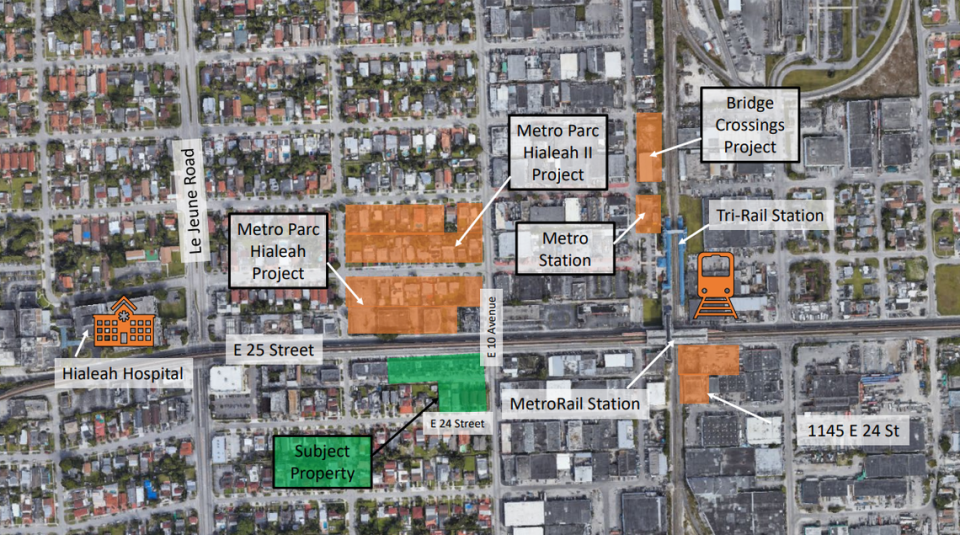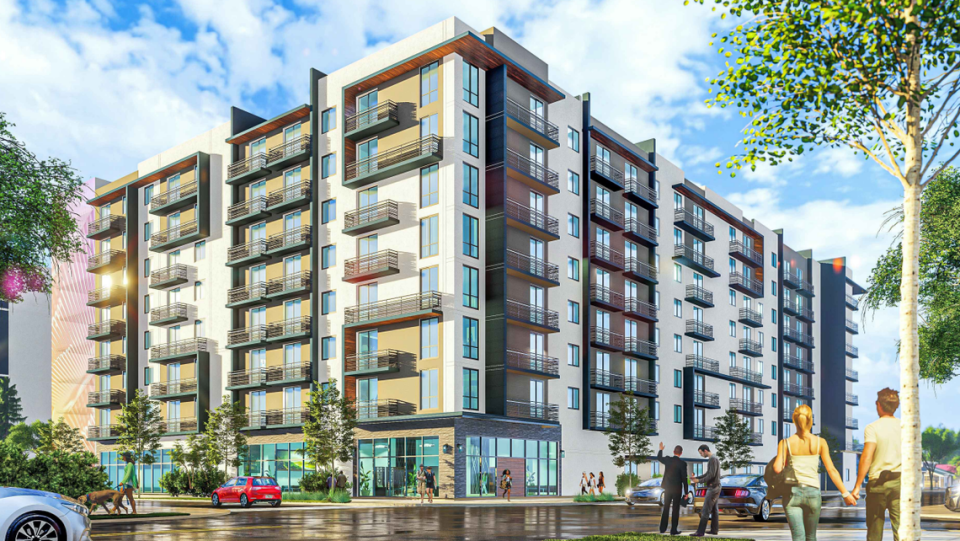What will happen to this east Hialeah neighborhood now that developers are taking over?
Real estate developers have had their sights on one particular area of Hialeah between Le Jeune Road and East 10th Avenue for a while.
Nancy Nawaz, 48, a resident of the area has been feeling the changes. Since last year she has been getting calls from real estate agents looking to help her move out.
“First they offered us $499,000, but on the last call they promised up to $525,000,” said Nawaz, who lives in a single family home with her mother, son and nephew. “Although my mom is excited to sell, I have had to explain to her that with that money we won’t be able to buy a similar property in Hialeah.”
But now developers have claimed this niche in the eastern part of Hialeah near the Metrorail station to erect tall condos in an area filled with single family homes.
The zoning has changed for eight blocks between East 24th St to East 32nd St, from single-family to multi-use housing, including construction of buildings over eight stories.
And in the last two months the Hialeah City Council has approved three new developments: An expansion of the Metro Parc project, with 629 additional units located at 955 East 25th St and 980 East 26th Street; a 347-unit, 10-story building facing East 25th Street by Saber South Hialeah, LLC, a company in Hallandale Beach; and a 613 unit building by Taves Capital Group, LLC along East 28th Street, with eight stories and first floor shops facing East 10th Avenue.

Now residents like Nawaz, who lives just three blocks north of these developments, are worried about what these changes will mean for their neighborhood.
“Who is going to move into those buildings? No one in the community can afford those prices earning $43,000,” said Nawaz. “Many are renting a room, like an efficiency, for $1,300. They will be even less able to pay those rents,” she said.
Milly Herrera, a resident the eastern area of Hialeah for 56 years, thinks that “the land grabs and gross construction projects we are seeing - taking homes, destroying neighborhoods, displacing businesses and gentrify people, affecting our peace and quality of life.”
Adrián Madriz, Co-Executive Director of Development and Infrastructure of the non-profit Smash (Struggle for Miami’s Affordable and Sustainable Housing,) warns that “there is a real danger (with these developments) that rents will become too high for residents to afford, and they will need to move to another part of the county, or even the state.”
More than 2,100 units on four streets
Just across East 10th Avenue from all the development is an industrial zone filled with auto shops, warehouses and other industrial enterprises. Probably not the best view for the new residents of these tall buildings.
Part of this industrial area was designated by the city as the Transit Oriented Development District (TOD) in 2016, with the purpose of reducing traffic and improving air quality, due to its proximity to the Tri-Rail and Metrorail.
In the 2015-2025 Comprehensive Plan, it says that the TOD would allow “better connectivity for pedestrians, bicycles, cars and public transportation, the development of attractive and walkable areas, limiting dependence on cars, as well as the modernization of existing industrial facilities.”
So far, it’s still just an industrial zone with no “attractive and walkable areas” to speak of.
“Hialeah is a city of concrete. There is no space to walk, to ride a bicycle, the roads have too many potholes, but now they plan to build hundreds of apartments around us when the infrastructure in the area is the same as it was 20 or 30 years ago,” complained Lázaro Cabrera, 48, who lives on East 8th Lane, a mile away from these developments.
Cabrera fears that everything will get worse in the area. “The supermarket, the gas stations, the highways are going to collapse. All those residents will end up on our streets looking for parking,” he said.

Some residents are already seeing “chaotic” changes in the area.
“Every day there are big trucks blocking the road, generating more traffic. What is going to happen when those huge buildings are built? Where are those cars going to go?” Nawaz wondered.
But the situation is not only baffling residents but also some city politicians.
“I am concerned that we on the council continue to convert single-housing to buildings while ignoring the industrial corridor that was the area that originally was going to become a Development Transit District,” Councilman Bryan Calvo said.
In terms of aesthetics, the councilman thinks that in the city’s future “we are going to have an area where some buildings will be next to industrial areas,” he said.
“Before approving land zoning changes, the council should create a business infrastructure for these new residents that will come. The more buildings are built, the greater the flow of people will be, as well as more traffic congestion. In addition, taxes will go up,” Cabrera said.
The area will have more than 2,100 units, including 560 in Metro Parc I and 629 in Metro Parc II, exponentially increasing population density.
David Cisnero, 54, who has lived in the area for 41 years, is not against developers but he opposes the construction of buildings that exceed three stories in height.
“Traffic is going to be a big problem, like the one that Brickell, Downtown Miami or Wynwood suffers today. Hialeah’s infrastructure is not designed for that boom overnight,” Cisneros said. “Once those buildings are up, nothing can be done. We as residents will have to deal with it,” he complained.
Carlos Díaz, a lobbyist for developers Saber South Hialeah and Taves Capital Group, told the council members that “after the plan is approved, many improvements must be made. We must speak with Public Works, the Department of Highways, and in most cases, infrastructure improvements such as pipelines, repairing streets have to be made.”
Councilwoman Mónica Pérez asked the lobbyist if it was possible to create a pedestrian sidewalk that connects the area of the new developments to the train stations, to which Díaz replied, “We want East 25th St to remain as a boulevard and we are coordinating with Metro Parc, which has construction on the street in front, so that both streets remain the same,” he said.
However, residents are not convinced that all this construction near the Metrorail will help traffic.
“The council approve and approve construction near the Metrorail saying that those residents will not use their cars,” Nawaz said. “Who does not use a car in Miami?”


